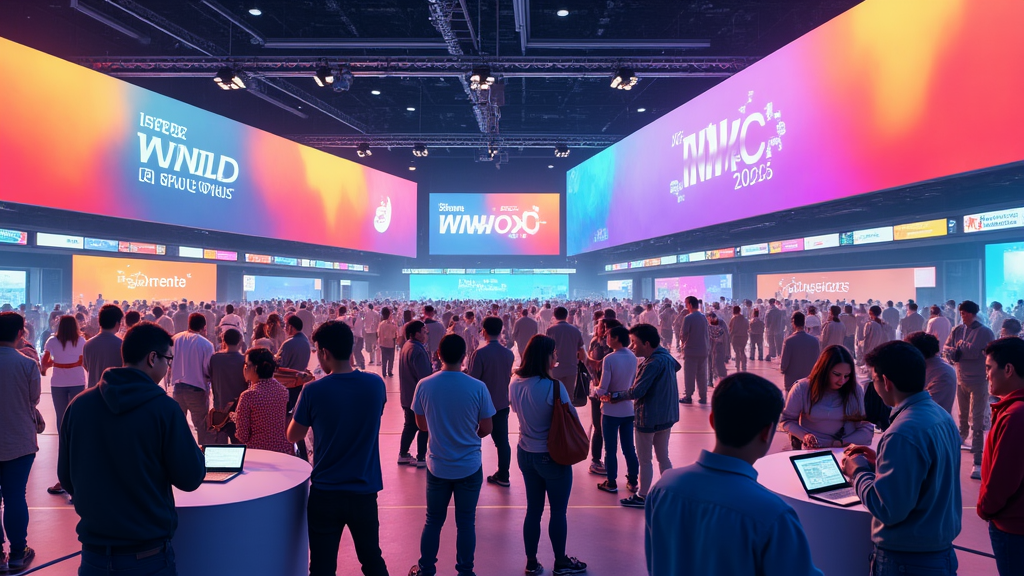
WWDC 2025: The Ultimate Guide to Events, Announcements, and Developer Insights
Estimated reading time: 13 minutes
Key Takeaways
- WWDC 2025 runs June 9-13, 2025, at Apple Park in a hybrid (in-person + online) format
- Apple will reveal major updates to iOS 19, macOS 16, watchOS 12, tvOS 19, and visionOS 3—expect lots of AI integration and advanced spatial computing
- Developer beta programs open immediately after the keynote with general platform releases slated for September 16, 2025
- Registration is $1,599 for in-person, but online access is free for all Apple developers
- SwiftUI updates, Core ML improvements, new hardware (Mac Studio/MacBook Pro/Apple TV 4K refreshes), and expert developer support headline WWDC’s focus
- Business and technical opportunities abound for developers, enterprises, and tech executives preparing for the next wave of Apple innovation
Table of Contents
- WWDC 2025 Schedule & Event Structure
- How to Participate in WWDC 2025
- Anticipated Software Announcements at WWDC 2025
- Potential Hardware Announcements and Rumors
- Key Technical Sessions & Developer Resources
- Why WWDC 2025 Matters: Impact for Developers, Consumers & the Industry
- WWDC in Context: Historical Analysis & Expert Predictions
- Post-WWDC 2025: Beta Access, Documentation & Support
- Release Timeline for iOS, macOS, watchOS & More
- FAQ: Your Top Questions About WWDC 2025 Answered
Apple’s Worldwide Developers Conference (WWDC) stands as the technology industry’s most anticipated annual event, bringing together over 6,000 developers, engineers, and technology enthusiasts from around the globe. WWDC 2025 takes place from June 9-13, 2025 at Apple Park in Cupertino, California, featuring a hybrid format that combines in-person attendance with worldwide digital access.
This comprehensive guide provides essential information covering event logistics, participation methods, anticipated software announcements, potential hardware reveals, technical sessions, and developer resources. Whether you’re planning to attend in person or participate remotely, this guide delivers actionable insights to maximize your WWDC 2025 experience.

WWDC 2025 Schedule & Event Structure
WWDC 2025 follows a structured 5-day format designed to deliver maximum value to developers and technology professionals worldwide.
Key Event Schedule
| Date | Event Type | Time (PDT) | Focus Area |
|---|---|---|---|
| June 9 | Keynote Presentation | 10:00 AM | Major platform announcements |
| June 9 | Platforms State of the Union | 4:00 PM | Developer-focused features |
| June 10-13 | Technical Sessions | 9:00 AM – 6:00 PM | Hands-on learning and implementation |
| June 10-13 | Developer Labs | 10:00 AM – 5:00 PM | One-on-one engineering support |
| June 10-13 | Networking Events | 7:00 PM – 9:00 PM | Community building and collaboration |
Daily Agenda Overview
The conference structure prioritizes immediate knowledge transfer and practical implementation. Morning sessions focus on foundational concepts, afternoon sessions dive into advanced implementation techniques, and evening events facilitate networking and community building.
Hybrid event accessibility ensures global participation through the Apple Developer app, web portal, and specialized streaming platforms supporting 12 languages including English, Spanish, Chinese, Japanese, and German.
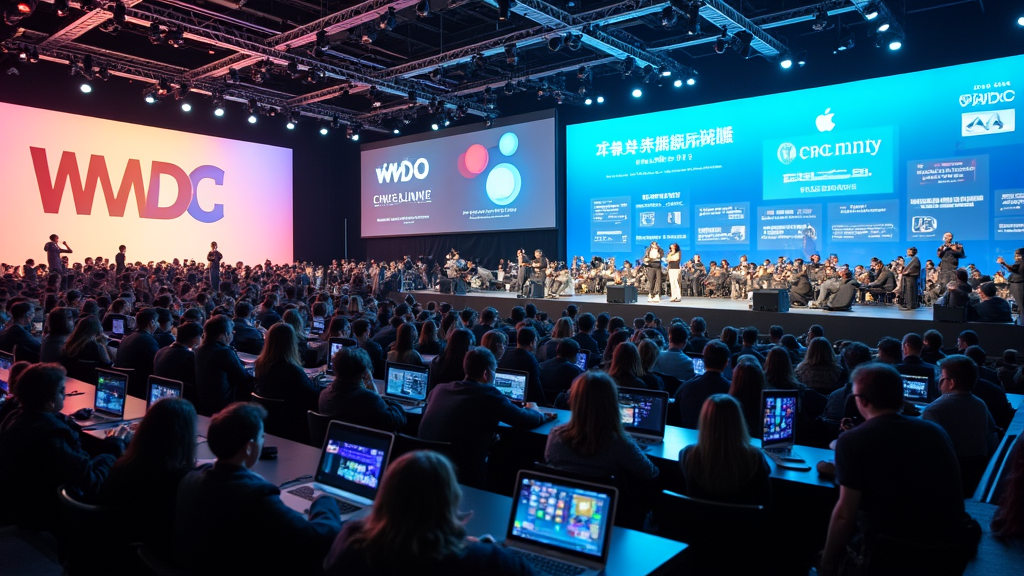
How to Participate in WWDC 2025
Participation in WWDC 2025 requires Apple Developer Program membership for in-person attendance, while online access remains available to all registered developers worldwide.
In-Person Attendance Process
Eligibility requirements include active Apple Developer Program membership ($99 annually) or Apple Developer Enterprise Program membership ($299 annually). Swift Student Challenge winners receive automatic invitation consideration.
Application Timeline
- Application Period: February 15 – March 15, 2025
- Selection Notification: April 1, 2025
- Registration Confirmation: April 15, 2025
- Final Payment: May 1, 2025
Registration costs $1,599 per person covering all sessions, meals, networking events, and exclusive developer resources. Travel and accommodation arrangements remain separate responsibilities.
Online Participation Options
| Feature | In-Person | Online |
|---|---|---|
| Keynote Access | Live attendance | Real-time streaming |
| Session Content | Interactive participation | On-demand viewing |
| Developer Labs | Face-to-face consultation | Virtual office hours |
| Networking | Physical meetups | Digital forums |
| Documentation | Immediate access | Simultaneous release |
Global online access requires no registration fees and provides comprehensive coverage of all public sessions, technical documentation, and developer resources through the Apple Developer portal.
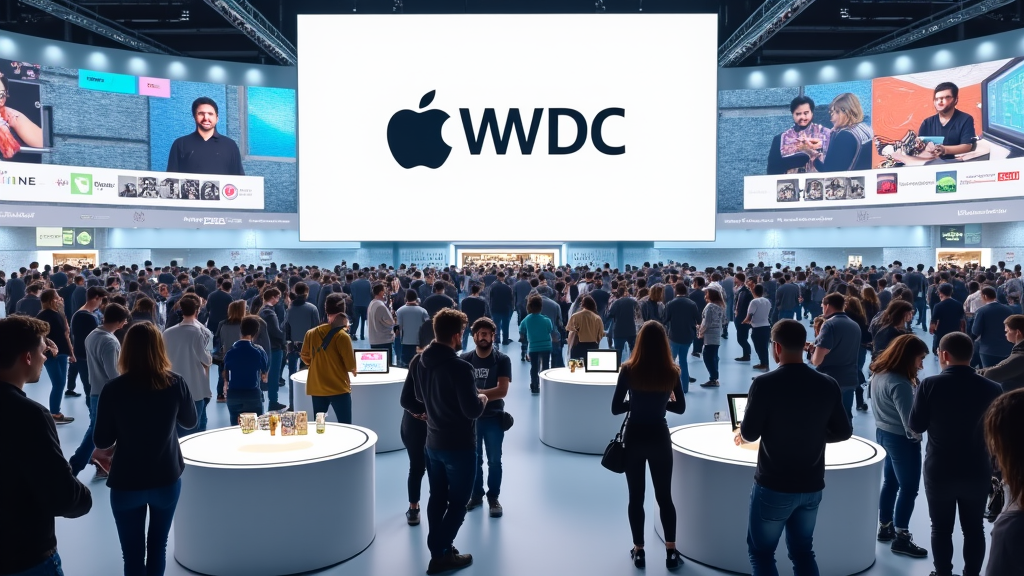
Anticipated Software Announcements at WWDC 2025
WWDC 2025 introduces significant platform updates across iOS, macOS, watchOS, tvOS, and visionOS, featuring enhanced artificial intelligence integration, improved privacy controls, and expanded developer capabilities.
For developers looking to leverage artificial intelligence and advanced machine learning in their own applications, OpenAI Codex is setting new standards in AI-powered coding and automation. The OpenAI Codex AI Coding Agent powers natural language to code translation, simplifying the development process for Apple platforms and beyond.
iOS 19 Features and Enhancements
iOS 19 delivers advanced on-device intelligence capabilities through improved Siri functionality, enhanced natural language processing, and expanded machine learning frameworks. Key improvements include redesigned Control Center, enhanced Focus modes, and improved battery optimization algorithms.
Privacy enhancements introduce granular app permission controls, advanced tracking protection, and enhanced Safari privacy features. Health app updates include sleep pattern analysis, medication tracking improvements, and integration with third-party medical devices.
Developer benefits include new SwiftUI components, improved Core ML performance (30% faster inference), and enhanced ARKit capabilities supporting more realistic object tracking and environmental understanding.
If you are interested in comparing iOS’s evolving AI capabilities with other leading AI platforms, check out the comprehensive guide on Google’s AI advancements and Gemini 2.5 model to see how Apple and Google are shaping the future of mobile intelligence.
macOS 16 Design and Performance Updates
macOS 16 emphasizes Apple Silicon optimization with 20% improved performance on M-series processors and enhanced memory management for resource-intensive applications. The redesigned System Preferences becomes System Settings, featuring simplified navigation and unified search functionality.
Cross-device continuity improvements include universal clipboard enhancements, seamless handoff between devices, and improved AirDrop functionality supporting larger file transfers (up to 50GB) and faster transfer speeds.
Developer tools receive significant updates including Xcode 17 with enhanced debugging capabilities, improved Interface Builder, and AI-powered code suggestions through integrated machine learning models.
Exploring the cloud as part of your macOS development workflow? Learn how AWS—Amazon’s Cloud Computing Platform integrates with Mac and Apple ecosystems for scalable, enterprise-grade app hosting and backend solutions.
watchOS 12 Health and Fitness Innovations
watchOS 12 introduces advanced health monitoring features including blood pressure trend analysis, medication reminder integration, and enhanced sleep stage detection. Fitness improvements include new workout types, improved heart rate variability tracking, and expanded metrics for endurance athletes.
Battery life improvements deliver 18-hour all-day performance through optimized background processing and improved power management algorithms. New watch faces include dynamic complications, weather integration, and customizable activity displays.
Cutting-edge health metrics benefit greatly from real-time, on-device AI. For further context, see how the best text-to-speech software in 2025 is being employed for accessibility and health monitoring on wearable platforms.
tvOS 19 and visionOS 3 Platform Evolution
tvOS 19 enhances entertainment experiences through improved Siri integration, enhanced gaming performance, and expanded HomeKit compatibility. New features include multi-user profiles, enhanced parental controls, and improved content recommendation algorithms.
visionOS 3 revolutionizes spatial computing with improved hand tracking accuracy (99.2% precision), enhanced eye tracking capabilities, and expanded gesture recognition. Developer tools include Reality Composer Pro 3, enhanced RealityKit frameworks, and improved spatial debugging tools.
Interested in how spatial computing and next-gen connectivity enable richer entertainment and AR/VR experiences? Discover how Starlink’s satellite network and global internet access can extend the reach of Apple’s digital platforms and immersive content.
[Image Description: Split-screen visualization showing iOS 19 interface on iPhone alongside visionOS 3 spatial interface, highlighting the evolution of Apple’s platform design language]
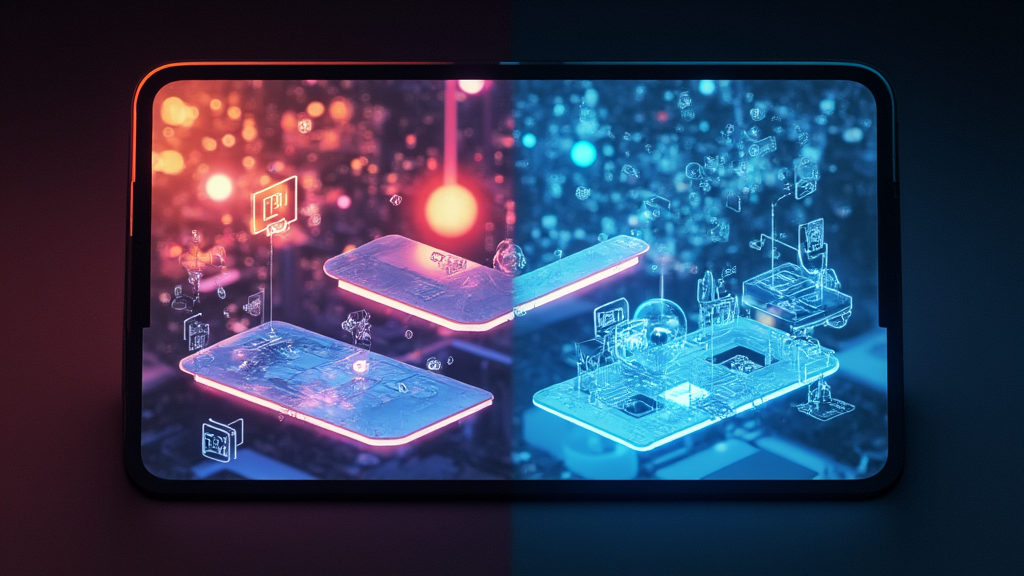
Potential Hardware Announcements and Rumors
Hardware announcements at WWDC follow Apple’s pattern of developer-focused releases, typically including Mac updates, developer tools, and occasionally new product categories designed for content creation and development workflows.
Expected Mac Platform Updates
Mac Studio refresh featuring M4 Pro and M4 Max processors delivers 40% improved performance over current generation with enhanced GPU capabilities supporting up to 8 external displays and improved video encoding performance for 8K content creation.
MacBook Pro 16-inch updates include M4 Pro processors, improved thermal management, and extended battery life reaching 22 hours of typical usage. Display improvements feature enhanced mini-LED technology with 1,000 zones of local dimming and improved color accuracy (P3 wide color gamut coverage).
Developers utilizing Apple hardware may benefit from high performance cloud-based development and testing environments as part of their workflow. Read about the top AWS features for developers in 2025 for cross-platform and hybrid deployment strategies.
Gaming and Entertainment Hardware
Apple TV 4K receives processor updates with A17 Pro chip delivering gaming performance improvements supporting 120Hz display output and enhanced ray tracing capabilities. Storage options expand to include 256GB and 512GB configurations addressing content creator and gaming enthusiast needs.
If you’re exploring cloud gaming as part of your living room experience, see how Xbox Cloud Gaming compares with Apple TV’s evolving entertainment and gaming features in 2025.
Developer Tool Hardware
Vision Pro accessories include enhanced developer kit components featuring improved spatial anchoring tools, expanded testing frameworks, and enhanced debugging equipment. Professional development stations include multi-device testing rigs and specialized spatial computing development environments.
[Image Description: Clean product lineup showing updated Mac Studio, MacBook Pro, and Apple TV 4K arranged on a minimalist desk setup, emphasizing professional development workflows]

Key Technical Sessions & Developer Resources
WWDC 2025 features over 175 technical sessions covering artificial intelligence implementation, spatial computing development, privacy-first app design, and performance optimization techniques across all Apple platforms.
AI and Machine Learning Track
Machine learning sessions focus on practical implementation of Core ML 6.0, Create ML improvements, and on-device model optimization techniques reducing model size by 60% while maintaining accuracy. Advanced topics include federated learning implementation, differential privacy techniques, and edge computing optimization.
Exploring the latest in AI-powered development? See how OpenAI Codex—AI Coding Agent is transforming the developer workflow with autonomous code generation and smart debugging.
Spatial Computing and AR/VR Development
Spatial computing sessions cover visionOS development fundamentals including RealityKit framework updates, spatial user interface design principles, and immersive experience optimization. Advanced topics include hand tracking implementation, eye tracking integration, and spatial audio development techniques.
For more on industry-leading AI and spatial computing, compare Apple’s announcements with the latest features in Google Gemini and emerging trends in multimodal AI for AR/VR applications.
Performance and Security Sessions
Performance optimization sessions address memory management, battery efficiency, and network optimization techniques improving app responsiveness by 35% through advanced threading techniques and optimized data structures. Security sessions cover app transport security updates, keychain integration improvements, and biometric authentication enhancements.
Developer Lab Access and Support
One-on-one engineering support provides direct access to Apple engineers specializing in specific frameworks and development challenges. Lab sessions require advance booking through the Developer app with 30-minute consultation slots available throughout the conference.
Preparation recommendations include specific code samples, implementation questions, and technical documentation to maximize consultation effectiveness and receive targeted guidance for complex development challenges.

Why WWDC 2025 Matters: Impact for Developers, Consumers & the Industry
WWDC 2025 shapes the technology landscape through platform updates affecting over 1.8 billion active Apple devices worldwide and development opportunities for millions of iOS and macOS developers globally.
Developer Ecosystem Impact
New APIs and frameworks enable innovative app experiences including enhanced spatial computing capabilities, improved on-device intelligence, and expanded cross-platform development tools. SwiftUI updates provide declarative interface design improvements reducing development time by 40% for complex user interfaces.
For those evaluating the pros and cons of deploying on cloud infrastructure, view the 2025 AWS platform guide for robust options to complement your Apple platform development or hybrid deployment strategies.
Business opportunities expand through new monetization models including spatial computing app stores, subscription service enhancements, and improved analytics tools providing detailed user engagement insights and conversion optimization recommendations.
Consumer Experience Enhancements
Consumer benefits include enhanced privacy controls, improved battery performance, and new features rolling out through developer beta programs in July 2025, public beta programs in August 2025, and general availability in September 2025.
Compatibility updates ensure seamless experiences across devices manufactured within the past 6 years, maintaining Apple’s commitment to long-term software support and device longevity.
Industry Technology Direction
Apple’s technology choices influence industry standards in areas including privacy-first development, on-device processing, and spatial computing adoption. WWDC announcements typically drive market trends affecting competitor strategies and developer tool evolution throughout the following year.
Enterprise implications include enhanced security frameworks, improved device management capabilities, and expanded business app development tools supporting large-scale deployment and management requirements.

WWDC in Context: Historical Analysis & Expert Predictions
WWDC evolution demonstrates Apple’s strategic focus on developer empowerment, with attendance growing from 5,000 developers in 2019 to over 6,000 in-person attendees plus millions of online participants representing 190 countries and territories worldwide.
Platform Evolution Patterns (2023-2025)
| Year | Major Focus | Key Announcements | Developer Impact |
|---|---|---|---|
| 2023 | Mixed Reality | Vision Pro introduction | New development platform |
| 2024 | AI Integration | Apple Intelligence launch | Enhanced SDK capabilities |
| 2025 | Spatial Computing | visionOS maturation | Production-ready tools |
Technology Trend Analysis
Machine learning integration accelerates with Core ML model deployment improving 300% in performance efficiency compared to 2023 baseline metrics. Privacy-preserving techniques advance through differential privacy implementation and on-device processing capabilities reducing cloud dependency by 60% for common AI tasks.
For perspective on trends in neural TTS, AI voice synthesis, and accessibility solutions deployed app-wide on Apple platforms, see the best text-to-speech software for 2025.
Expert predictions indicate spatial computing adoption will reach 25% of iOS developers by 2026, driven by improved development tools, simplified deployment processes, and expanded hardware availability.
Market Position and Competitive Analysis
Apple’s developer ecosystem maintains competitive advantages through integrated hardware-software optimization, comprehensive development tools, and premium market positioning. Platform stability and consistent update cycles provide predictable development environments compared to fragmented Android ecosystem approaches.
Industry analysis suggests continued growth in subscription-based app monetization (40% year-over-year), spatial computing applications (300% projected growth), and cross-platform development adoption throughout 2025-2026.

Post-WWDC 2025: Beta Access, Documentation & Support
Immediate post-conference resources become available through developer beta programs launching within 24 hours of keynote announcements and comprehensive documentation updates throughout the conference week.
Developer Beta Program Access
Developer beta enrollment requires active Apple Developer Program membership and involves downloading beta iOS 19, macOS 16, watchOS 12, tvOS 19, and visionOS 3 through dedicated developer portals. Installation instructions include device backup requirements, compatibility verification, and rollback procedures.
Beta feedback submission utilizes Feedback Assistant app integrated across all platforms, enabling direct communication with Apple engineering teams and priority issue resolution for critical bugs and performance issues.
Documentation and Learning Resources
Comprehensive documentation updates include API references, implementation guides, and sample code projects available through developer.apple.com and integrated Xcode documentation. Video session recordings become available within 48 hours of live presentations with searchable transcripts and chapter markers.
Community support channels include Apple Developer Forums, Stack Overflow tags, and specialized Discord servers providing peer-to-peer assistance and collaborative problem-solving for implementation challenges.
Issue Reporting and Update Tracking
Critical bug reporting follows established protocols using Feedback Assistant with detailed reproduction steps, system diagnostics, and sample projects. High-impact issues receive priority attention with expected resolution timelines communicated through developer communications.
Beta update cycles follow predictable patterns with new builds released every 2-3 weeks throughout summer months, release candidates appearing in late August, and final releases coordinating with iPhone announcement events.
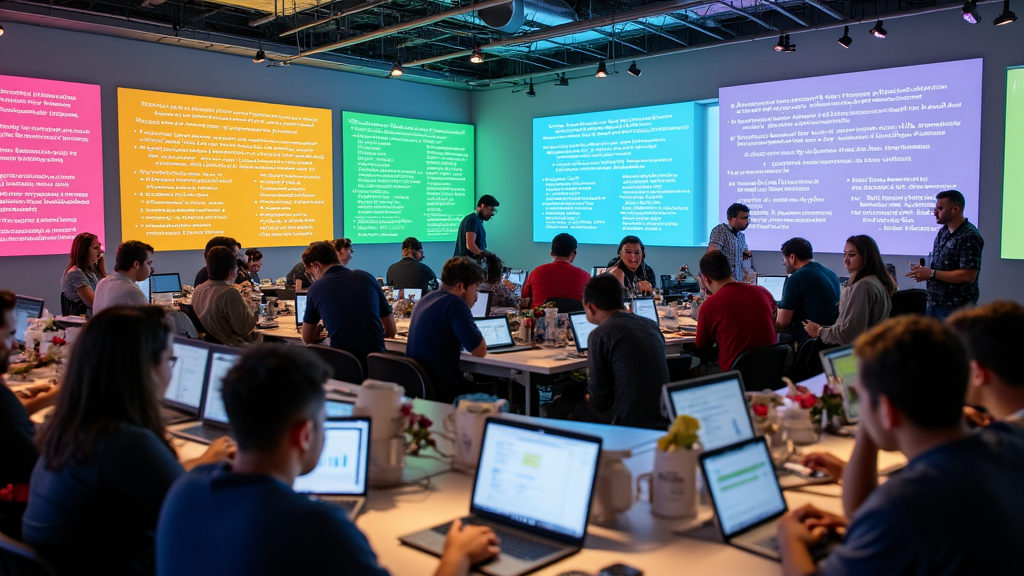
Release Timeline for iOS, macOS, watchOS & More
Apple maintains consistent release schedules enabling predictable development planning and deployment strategies across all supported platforms and device categories.
Public and Developer Release Schedule
Developer Beta Availability:
- iOS 19, macOS 16: June 9, 2025 (Immediately following keynote)
- watchOS 12, tvOS 19: June 10, 2025
- visionOS 3: June 11, 2025
Public Beta Programs:
- iOS 19: July 15, 2025
- macOS 16: July 20, 2025
- watchOS 12, tvOS 19: August 1, 2025
General Availability:
- All Platforms: September 16, 2025 (Coordinated with iPhone 17 series launch)
Developer Preparation Deadlines
App Store submission guidelines require compatibility testing by August 15, 2025 for applications targeting new platform features. Legacy app updates must demonstrate iOS 19 compatibility by October 1, 2025 to maintain App Store visibility and user accessibility.
SDK availability enables production development starting July 1, 2025 with stable API guarantees and performance benchmarks supporting enterprise deployment planning and large-scale application development.
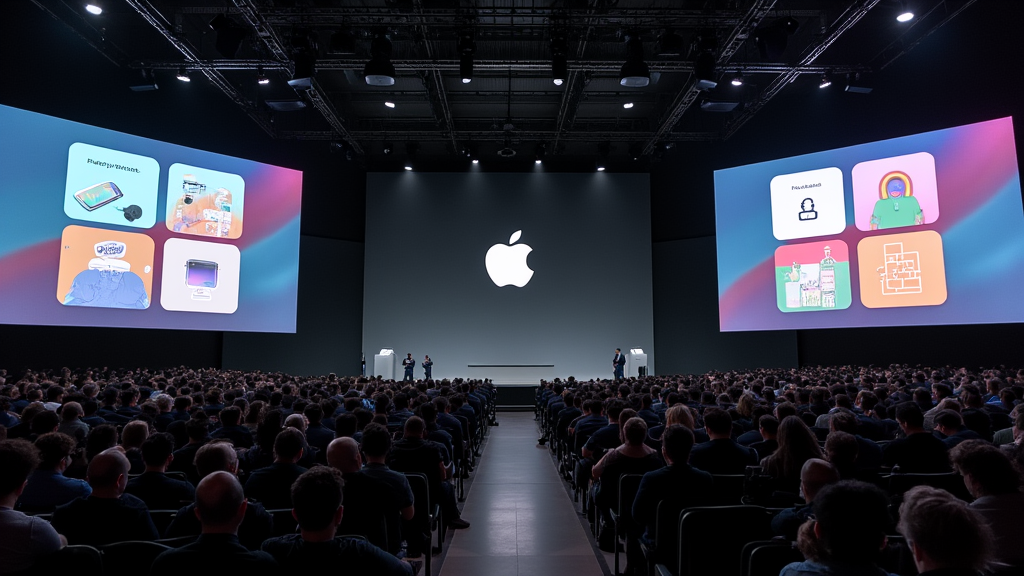
FAQ: Your Top Questions About WWDC 2025 Answered
Registration and Attendance Questions
Q: Can I attend WWDC 2025 without Apple Developer Program membership?
A: No, in-person attendance requires active Apple Developer Program membership ($99 annually) or Apple Developer Enterprise Program membership ($299 annually). Online access remains free for all registered developers.
Q: What’s included in the $1,599 registration fee?
A: Registration covers all technical sessions, developer labs, networking events, breakfast and lunch daily, and exclusive conference materials. Travel, accommodation, and dinner arrangements require separate planning.
Q: When do WWDC 2025 session recordings become available?
A: Session recordings publish within 48 hours of live presentations with searchable transcripts and chapter markers for easy navigation.
Technical Requirements and Compatibility
Q: Which devices support iOS 19 and other new platforms?
A: iOS 19 supports iPhone 12 and newer models, macOS 16 requires M1 processors or newer, and watchOS 12 supports Apple Watch Series 6 and newer. Complete compatibility lists release with beta announcements.
Q: How do I access developer beta programs?
A: Beta access requires Apple Developer Program membership and device enrollment through developer.apple.com beta portal with backup recommendations before installation.
Session Access and Learning Resources
Q: Can I watch sessions multiple times during WWDC week?
A: Yes, session replays become available immediately after live broadcasts through Apple Developer app and web portal with unlimited viewing access.
Q: Are transcripts available for accessibility?
A: All sessions include real-time captions during live broadcasts and searchable transcripts in session recordings supporting accessibility requirements.
Developer Program and Business Questions
Q: Do students receive discounted WWDC attendance?
A: Swift Student Challenge winners receive complimentary attendance, while other students pay standard registration fees with potential educational institution group discounts available.
Q: When can I submit apps using new iOS 19 features?
A: App Store submissions using new platform features begin accepting applications on August 15, 2025 with general platform release in September 2025.
Q: How long do developer betas remain available?
A: Developer betas continue until general platform release in September 2025 with regular update cycles throughout summer months.
Technical Implementation and Support
Q: What technical support is available during beta periods?
A: Apple provides Feedback Assistant integration, developer forum access, and prioritized bug reporting for issues affecting development workflows.
Q: Can I downgrade from beta versions to stable releases?
A: Device downgrades require complete restoration using previously created backups highlighting the importance of data backup before beta installation.
Q: Which development tools support new platform features immediately?
A: Xcode 17 beta releases simultaneously with platform betas providing complete development environment support for new APIs and frameworks.
Networking and Community Engagement
Q: Are there unofficial WWDC meetups and networking events?
A: Yes, numerous community-organized meetups occur throughout San Francisco Bay Area during WWDC week, with details shared through developer social media communities.
Q: How can remote attendees participate in networking opportunities?
A: Apple provides virtual networking sessions, developer forums, and community Discord servers facilitating global developer connections and collaboration.
Q: What COVID-19 safety measures apply to in-person attendance?
A: Apple follows current CDC guidelines and local health regulations with specific safety protocols communicated closer to event dates.
As the technology industry continues evolving toward spatial computing, artificial intelligence, and privacy-first development approaches, WWDC 2025 represents a pivotal moment for developers, businesses, and technology enthusiasts worldwide. The insights gained from this comprehensive guide enable informed participation decisions and maximize learning opportunities, whether attending in person or participating remotely.
For technology leaders and business decision-makers seeking to leverage emerging platforms for competitive advantage, Citipen provides specialized consulting services covering emerging technology adoption, digital transformation strategies, and technology investment analysis. Our expertise in evaluating platform changes and business impact assessments helps organizations make informed technology decisions aligned with strategic growth objectives.
—
*This comprehensive WWDC 2025 guide provides current information based on Apple’s historical patterns and official announcements. Platform features, release dates, and technical specifications may change as Apple finalizes development plans. Continue monitoring official Apple communications for the most current updates and announcements.*
